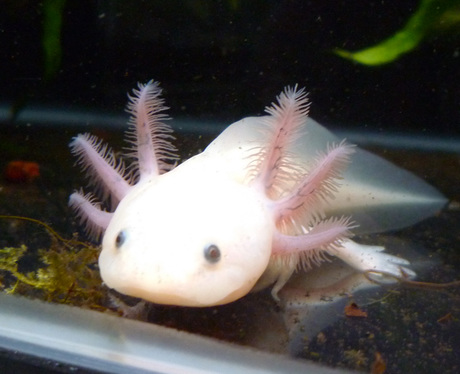The key to regrowing limbs may be in our RNA

The question as to why certain species are able to regrow limbs while most are unable has long plagued researchers. Why are some amphibians and fish species able to do this while others cannot, and how did mammals completely miss out on this most useful of traits?
A new study from The University of Maine has looked into limb regrowth and determined that microRNA may be the key to determining how and why a variety of otherwise seemingly unrelated species are able to regrow certain body parts.
The researchers chose to focus on three evolutionarily distant species that are known for their ability to regrow limbs and conduct RNA sequencing of regenerating limb tissues at various stages of the regrowth process following controlled amputation. The chosen test subjects were the forelimbs of the axolotl, caudal fins of the zebrafish and pectoral fins of the bichir.
The initial phase in the regeneration of limbs involves the formation of blastemal tissue, an unspecialised tissue which is little understood. The researchers found that all three species used a core group of conserved microRNAs in the regulation of blastema formation. This included some microRNAs which had not previously been identified as having an association with limb regeneration. The researchers posit that the genetic pathways of the studied species diverged over 400 million years ago but the ability to regenerate limbs may date back to a very distant common ancestor.
The authors are hopeful that this research may lead to future functional studies into the process of natural cellular reprogramming in an injury context and that their identification of the extensive regulation by miRNAs with previously unassociated blastema genes may help to explain why the capacity to regenerate damaged and amputated tissues is a trait so unevenly distributed throughout the animal kingdom.
“How and why certain organisms are better equipped to replace missing or damaged tissues has perplexed biologists for over three centuries,” the authors wrote in open-access journal PLOS ONE. “We postulate that a shared, conserved genetic regulatory circuit coordinates regeneration and patterning of limb/appendage tissues in animals that are separated by millions of years in evolution.”
Antibiotics hinder vaccine response in infants
Infants who received antibiotics in the first few weeks of life had significantly lower levels of...
Colossal announces 'de-extinction' of the dire wolf
Colossal Biosciences has announced what it describes as the rebirth of the dire wolf, which would...
Aspirin could prevent some cancers from spreading
The research could lead to the targeted use of aspirin to prevent the spread of susceptible types...




